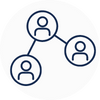As a preliminary step to implementing a Global Employee Assistance Program (GEAP) in locations with infrastructure challenges, an American multinational oil and gas corporation engaged Workplace Options (WPO) to perform a community asset analysis and needs assessment to determine gaps between employee needs and existing organizational and community resources.
SITUATION
The scope of this project included 10,000 employees at 40 worksites, in 10 administrative offices and 30 remote field or off-site locations. The project gathered data from each location around:
– The work environment at each facility (work performed, volumes, schedules, and shifts)
– Business and worker pressures/risks related to the work
– Workforce demographics
– Local cultural traditions and practices in each location
– Perspective of HR and Management Team
– Specific life management issues faced by employees
– Existing company resources
– Corporate or site-specific communication practices
ACTION
This project was divided into four phases spanning four months. WPO worked with a Project Planning Team to ensure that each location was represented by key stakeholders who held knowledge of the location.
Phase 1: Planning WPO met with the management team to discuss and finalize the overall objectives and approve the scope of the project, critical business requirements, internal stakeholders, project schedule and anticipated outcomes. We learned that three stakeholders were skeptical that a GEAP could be effective given the extent of the environmental challenges in their locations. The locations were flagged for deeper scrutiny.
Phase 2: Needs Assessment This phase gathered data from the local stakeholders in HR, Occupational Health, managers, and employees. The data was gathered from one-on-one interviews, focus groups, and online surveys. The team analyzed the data to reveal key common concerns, along with specific local issues.
Phase 3: On-Site Community Asset Analysis Taking a deep dive into the existing assets included a broad-scope examination of the infrastructure in each community. During this step, issues impacting daily life such as traffic/transportation, security, internet connectivity, and energy capacity were categorized. Relevant assets in the communities were identified, such as hospitals, educational institutions, dependent care programs, and other human services and resources. The team developed crosswalks from identified needs and challenges in Phase 2 to the assets in Phase 3. The mapping generated a broad overview of the resources that existed and highlighted gap areas.
Phase 4: Recommendations The data from the assessment and analysis informed recommendations including:
– A benefit review to determine communication or training related to gap areas in the community
– HR training on the challenges and resolution strategies faced by employees in each location
– Partnership with local organizations responding to some of the gap areas uncovered
– GEAP adaptations (recruitment of additional clinical professionals, acculturation briefings, communication and promotional modifications to reach remote and offshore populations, employee resilience training)
RESULT
The project resulted in an in-depth client understanding of the factors that most impact the overall quality of the worker experience.
Phases 2 and 3 revealed specific challenges related to lifestyle and work schedules, as well as those involving traffic, security, and internet connectivity that were outside the control of the organization. As such, training programs were implemented to help individuals manage their responses. HR received proactive strategies that could be used when coaching and providing feedback to employees. The team addressed earlier concerns reported from skeptical HR Managers and Occupational Health personnel. Meeting together, the project team was able to demonstrate how the gaps in programs—while not all resolvable—could be managed using relevant coping strategies and proactive education programs.
Finally, by implementing the recommendations developed as program adaptations, the GEAP program produced the following positive outcomes.
– HR team reports high satisfaction levels when referring the GEAP as a resource for employee issues
– Counseling and work-life program utilization remains higher than average for programs in the area
– HR reported robust utilization of the Manager Assist feature
– On-site training programs are well attended and highly rated
– Employees in field locations positively rate access to webinars and on-site counseling
This case story is based on a real-life situation, but some details have been modified to maintain confidentiality.





















